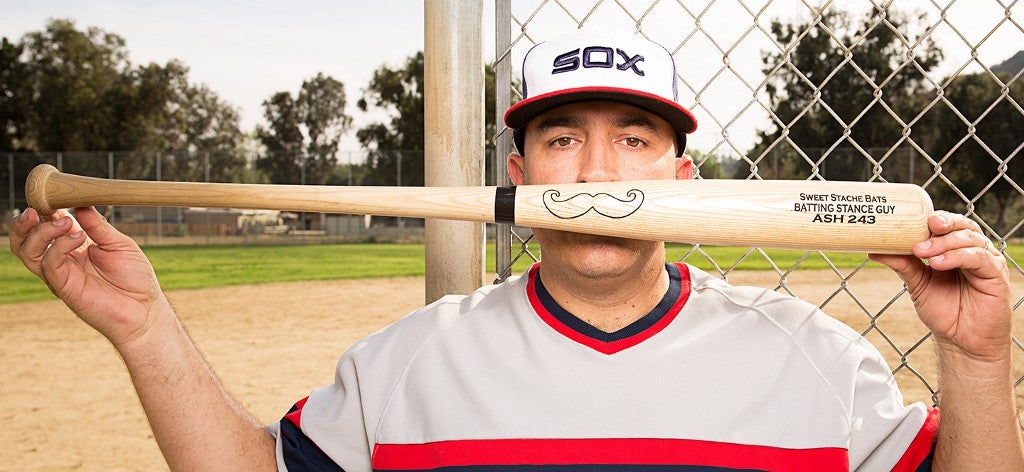It’s nearing midnight when San Diego Padres co-owner Tom Seidler turns his back on his own team.
Approximately 100 feet away, the Padres are in the bottom of the eighth inning trying to widen an 8–3 lead against the visiting Washington Nationals. The season is young (it’s mid-May of last year), but the game is nonetheless significant — the Nationals are considered by many to be the most talented team in the National League and the Padres still have an outside chance at a Wild Card berth.
But at the moment, Seidler doesn’t give a shit about what’s happening on the field. Instead, he and his six guests are captivated by Gar Ryness, aka “The Batting Stance Guy,” the world’s preeminent imitator of professional baseball players’ batting stances.
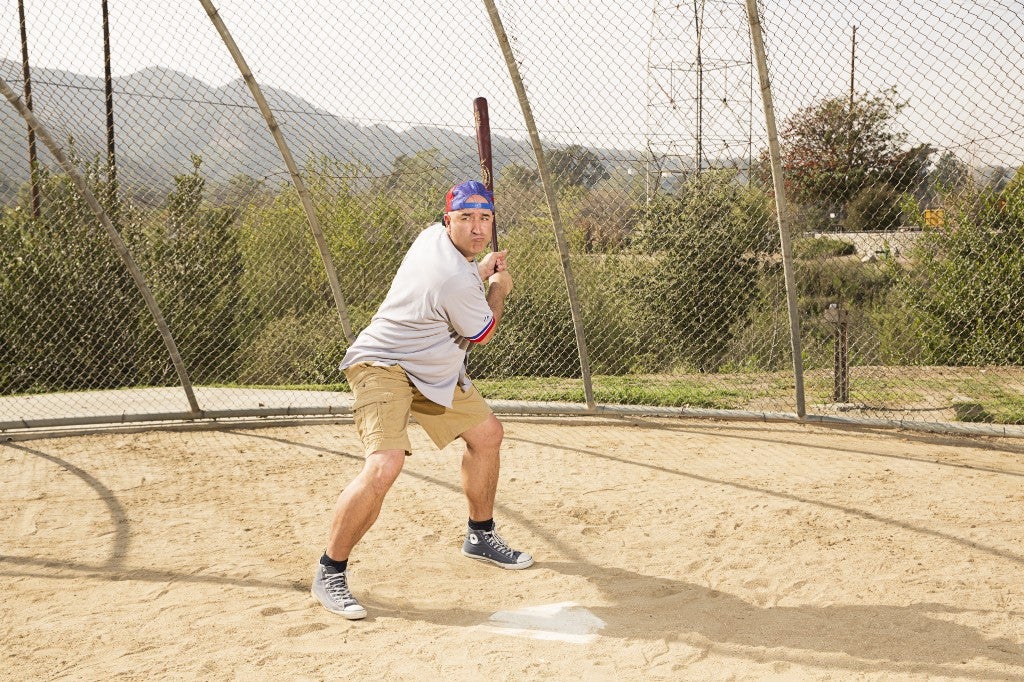
Ryness looks out of place here in the Lexus Home Plate Club, the VIP-only lounge nestled beneath the Petco Park grandstands. Its amenities include a buffet and bottomless cocktails. The seats are just a few strides up the first baseline from home plate, and its clientele is accordingly bougie.
Meanwhile, Ryness — quarter-zip sweatshirt, cargo shorts, fitted ballcap (with the bill facing backward) — looks more like the overgrown man child you’d expect to see inhaling a Friar Frank in the bleachers. His garb fits his modest demeanor — swarthy, full-faced and always smiling, Ryness describes himself as “handsome Al Qaeda.”
https://twitter.com/fightinhydrant/status/599043101986983936
But for now, the room is his. The Seidler Seven — Seidler; two brunettes in their late-30s whose energy suggests they teleported in from the streets of Manhattan; an ebullient older couple (both around 60 years old) and their soft-spoken 20-something son; and a short man in a fedora and yacht pants — have formed a small semicircle around Ryness and are shouting the names of their favorite baseball players at him.
“She’s from Boston. Do Nomar!” Seidler barks, motioning to the brunette at his side.
Ryness smirks, then quickly narrows his face. Many have aped Nomar Garciaparra’s OCD batter’s-box ritual, but Ryness knows a proper batting-stance impression requires more nuance, which for Nomar means copping a quizzical opened-mouth gape.
Ryness grips the bat in his left hand and rests the bat head on his right shoulder, freeing his right hand to frenetically adjust a pair of imaginary batting gloves. Once the gloves are adjusted to comfort, he moves his left foot into the batter’s box and breaks into Nomar’s signature pre-pitch two-step; alternately tapping each foot’s toes against the barroom floor, all while windmilling the bat at the pitcher.
As the imagined pitcher enters his windup, Ryness cocks the bat behind his head and readies himself for the throw. The swing itself is the most unremarkable portion of any of Ryness’ myriad impressions. All Major League Baseball players “come through the zone the same way,” Ryness later explains, meaning the key to impersonating a batting stance lies in accentuating the player’s pre- and post-swing quirks.
After Garciaparra made contact, he was notorious for throwing his bat so deep into foul territory that it risked flying into the first-base dugout. And so, while Ryness refrains from launching his Wiffle ball bat through the bar, he makes a point of alerting the crowd to this oft-overlooked facet of Garciaparra’s swing. (Ryness pointed out this idiosyncrasy to Garciaparra himself in 2008, eliciting a laugh from the retired slugger.)
Delighted, the brunette squeals.
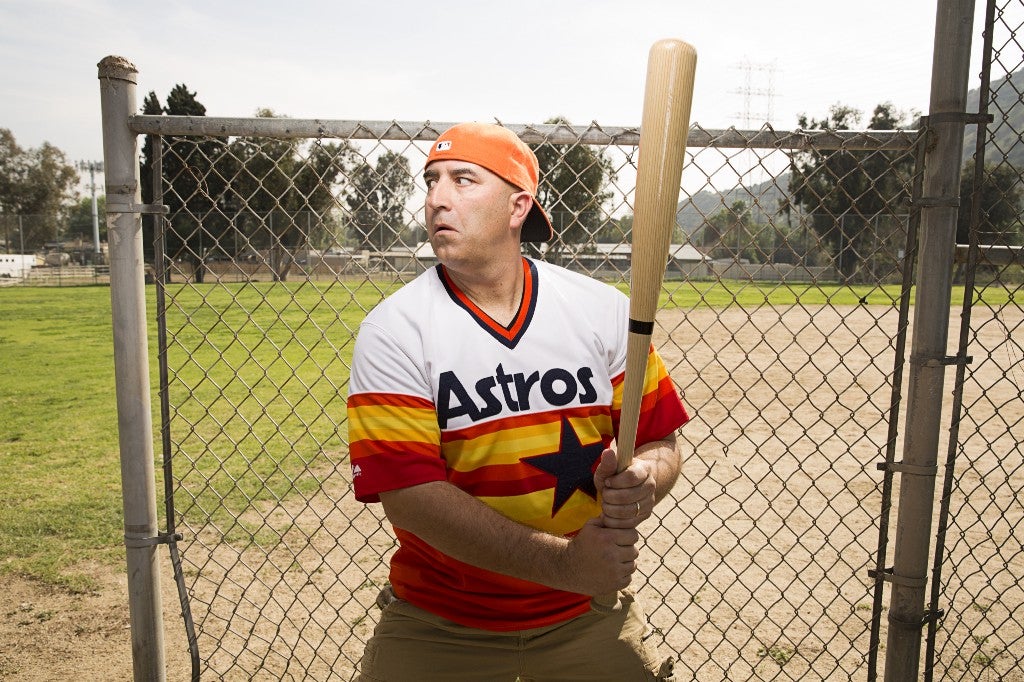
The older woman requests, “Oh, what’s his name? You know, he played for the Angels?”
“Rod Carew!” her husband shouts, finishing her thought.
Ryness loosens his fingers and wrists, gripping the bat so gingerly it looks on the verge of slipping from his hands. “The thing about Rod Carew is that he was so loose,” Ryness says, “that often, between the first and second pitch, he’d fall asleep.”
Ryness’ head droops and his eyes close as if he’s suddenly passed out. His small audience — which has since grown to include the blonde bartender — reels with laughter.
“This guy’s hilarious!” the bartender screams before pouring another glass of cabernet.
Ballplayers young and old, famous and obscure — Ryness ad libs them all; the crowd howling at each.
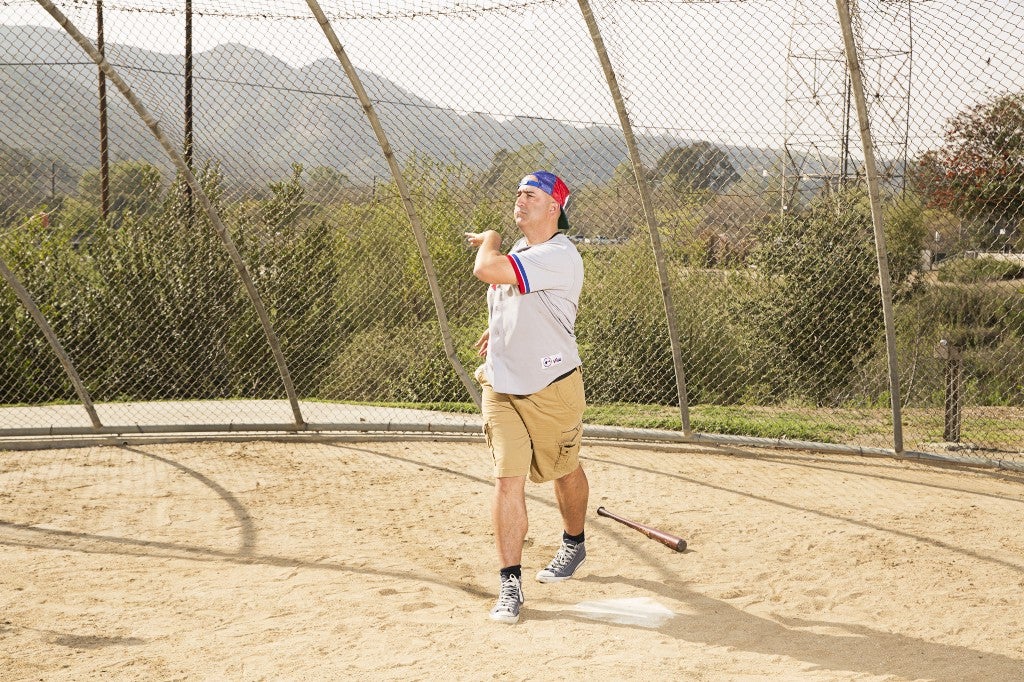
His eyes bulge when mimicking Gary Sheffield’s menacing glare. He pops his collar and struts down the first baseline to capture Rickey Henderson’s signature swagger. He mocks how Derek Jeter stuck out his ass when taking a pitch, how David Ortiz waddles getting out of the batter’s box and how Ken Griffey Jr. gazed upon his home runs, seemingly unimpressed with his own greatness. He knows the dozen or so stances Cal Ripken Jr. sported throughout his career and the order in which Ripken used them.
He recalls the precise angles at which players held their bats and positioned their feet; their facial tics and hip swivels; their frenetic, post-swing arm movements. He knows which players chewed tobacco during games, pressing his tongue against the inside of his lower lip when applicable.
Fedora Man asks for Gary Matthews Jr. — a journeyman outfielder who only made one All-Star game and never hit more than 19 home runs in a season — and walks back to his barstool giggling at Ryness’ impression (chest puffed, arms stiff, off-balance in follow-through).
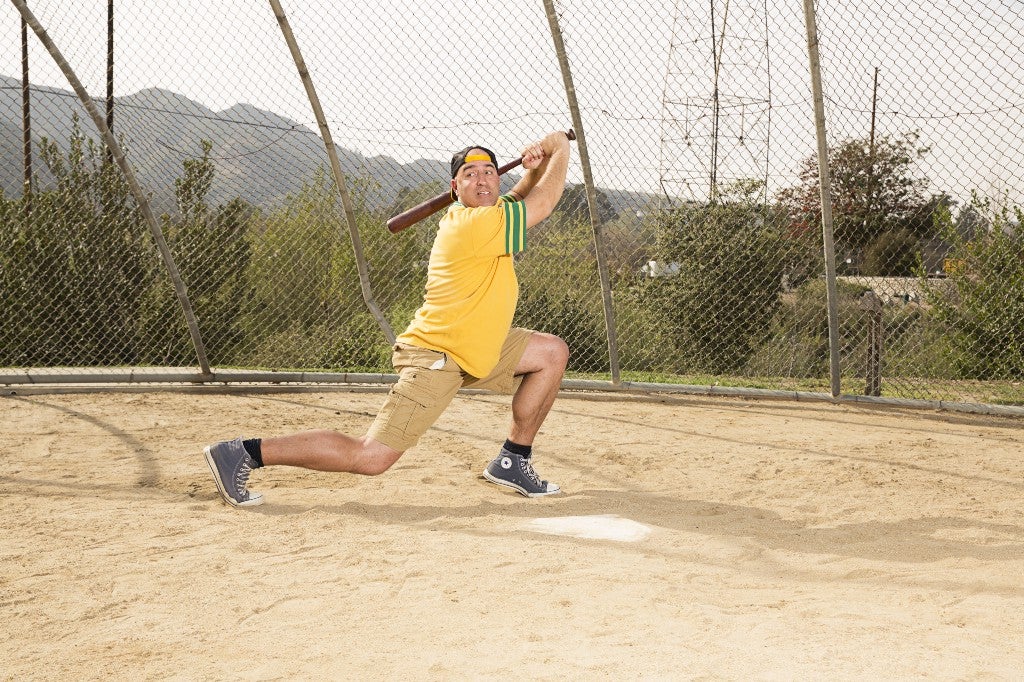
“It’s quite a skill you’ve honed,” the second brunette says.
The first brunette concurs. “Yes, it’s quite impressive.”
It’s also, according to Ryness himself, “the least marketable skill in America.”
Ryness was allowed only seven hours of TV per week as a child, so he parceled his viewing judiciously: one baseball game (typically the NBC Game of the Week), This Week in Baseball every Saturday morning and some combination of Diff’rent Strokes, The Wonder Years, Family Ties and The Cosby Show. If he was lucky, he’d catch a few innings of the occasional A’s or Braves game.
When he wasn’t watching games on TV, he sat alone with his baseball card collection, aping the players’ photos and batting stances, simulating entire games for his own amusement.
Memorizing players’ mannerisms proved effortless. To this day, he absorbs most players’ stances subconsciously, only resorting to game footage when he needs to learn a player who was recently called up from the minor leagues. His memory has garnered comparisons to Rain Man, which he takes as a compliment.
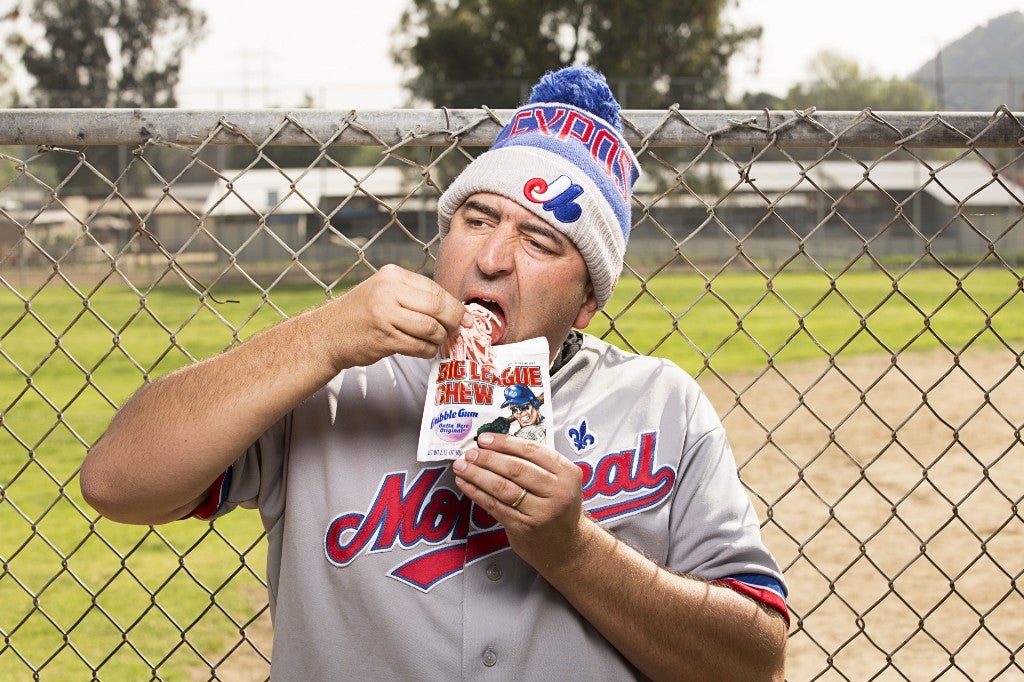
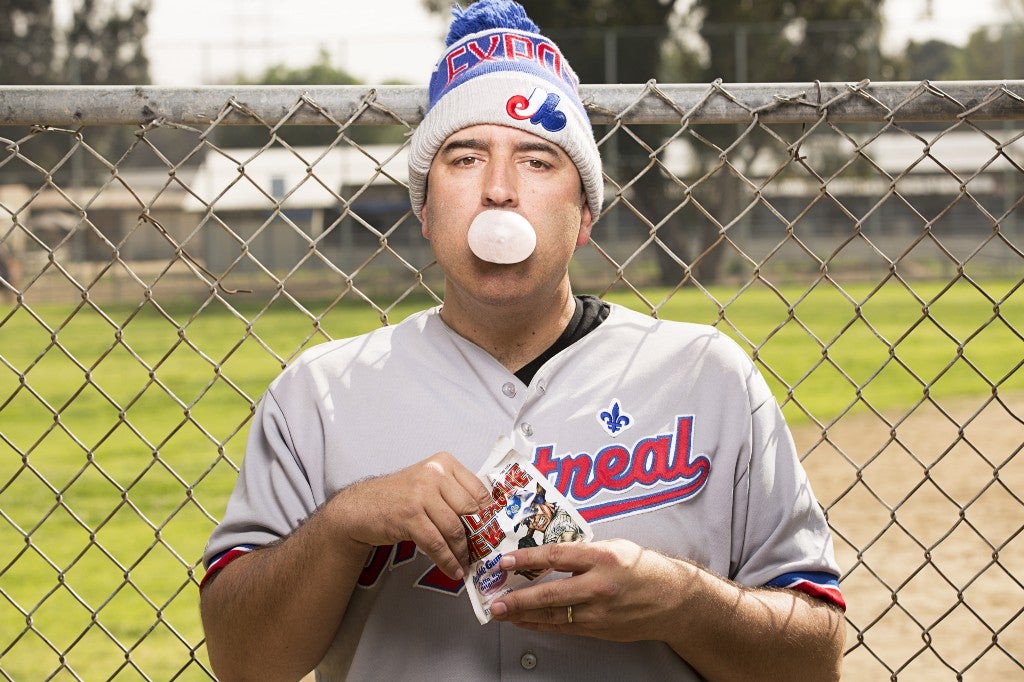
His first performance in front of a crowd came one rainy afternoon during his freshman year at Syracuse University. Confined indoors, he and his dorm-mates turned the communal study room into a makeshift baseball stadium; a poster tube served as a bat, the ball a crumpled piece of loose leaf. At one point, Ryness, playing as the 1986 Mets, busted out his Lenny Dykstra impression (eyes squinted, bat held in front of the shoulder closest to the pitcher, fingers a-flutter).
“I never heard laughter like that before,” he remembers.
For years, Ryness’ talent remained an amateur vaudeville act known only to friends and family. But in April 2008, Batting Stance Guy got an assist from The Sports Guy — a YouTube clip of Ryness impersonating Boston Red Sox players made its way to sports columnist Bill Simmons, who featured it on his AOL blog and in a link roundup for ESPN.

Soon it was on the front page of YouTube, and Ryness blew up. Fox Sports invited him to perform at home games for the Minnesota Twins and Los Angeles Dodgers. He performed his shtick on the Late Show, for which Letterman thanked him with a bucket of pine tar. There were appearances on ESPN and MLB Network, and a book, A Love Letter to Baseball, published by Simon & Schuster.
Academy Award-winning documentarian Ken Burns wrote Ryness a personal letter calling it “wonderful.”
“Your book will enliven a long flight to Israel,” Washington Post columnist George Will told Ryness in a barely legible handwritten letter.
Two summers ago, the Yankees flew Ryness first class to Houston and put him up in the Four Seasons just so he could perform at a team dinner. His impression of Jeter — ass out, a right hand softly held up to the umpire to call for time — drew some of the most raucous applause he’s ever experienced.
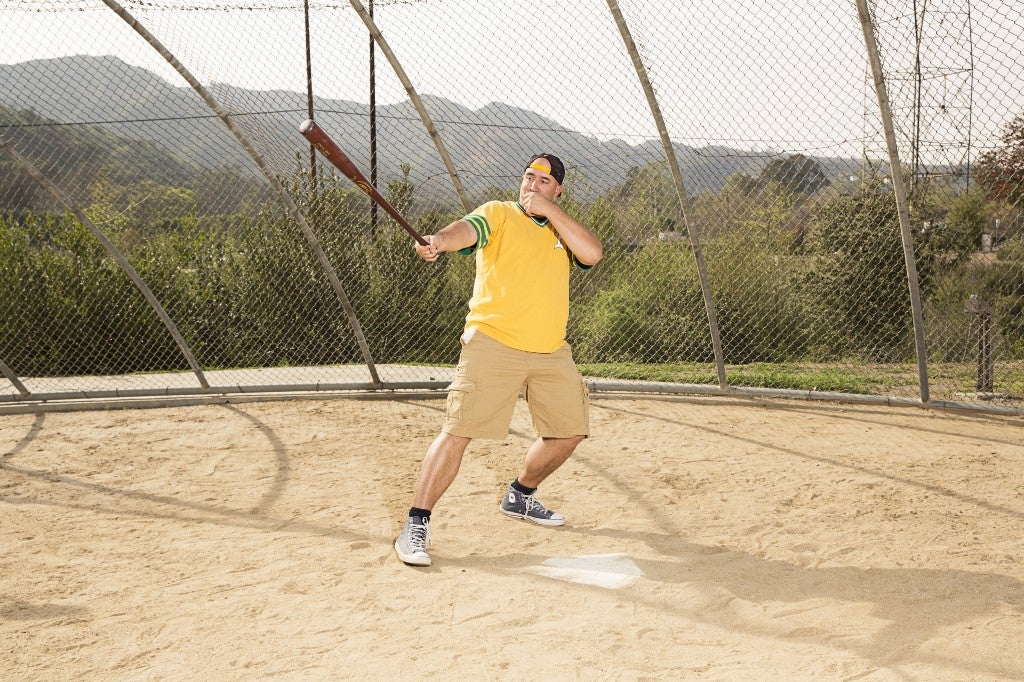
And yet, Ryness still needs to drive Uber, earning between $17 and $30 an hour, to make end’s meet.
Ryness is walking through the Petco Park concourse in the seventh inning when an usher spots him and asks for his impersonation of Derek Norris, the Padres catcher who homered earlier and will end the night 2 for 5 with 5 RBIs.
Ryness brandishes his ever-present black Wiffle ball bat from his backpack and becomes Norris (a concerned look, unblinking eyes, perfectly still while waiting for the pitch, then the front leg lifts and arms are swung so as to avoid touching his own beard).
The usher doubles over with laughter before running away, returning moments later with two male co-workers.
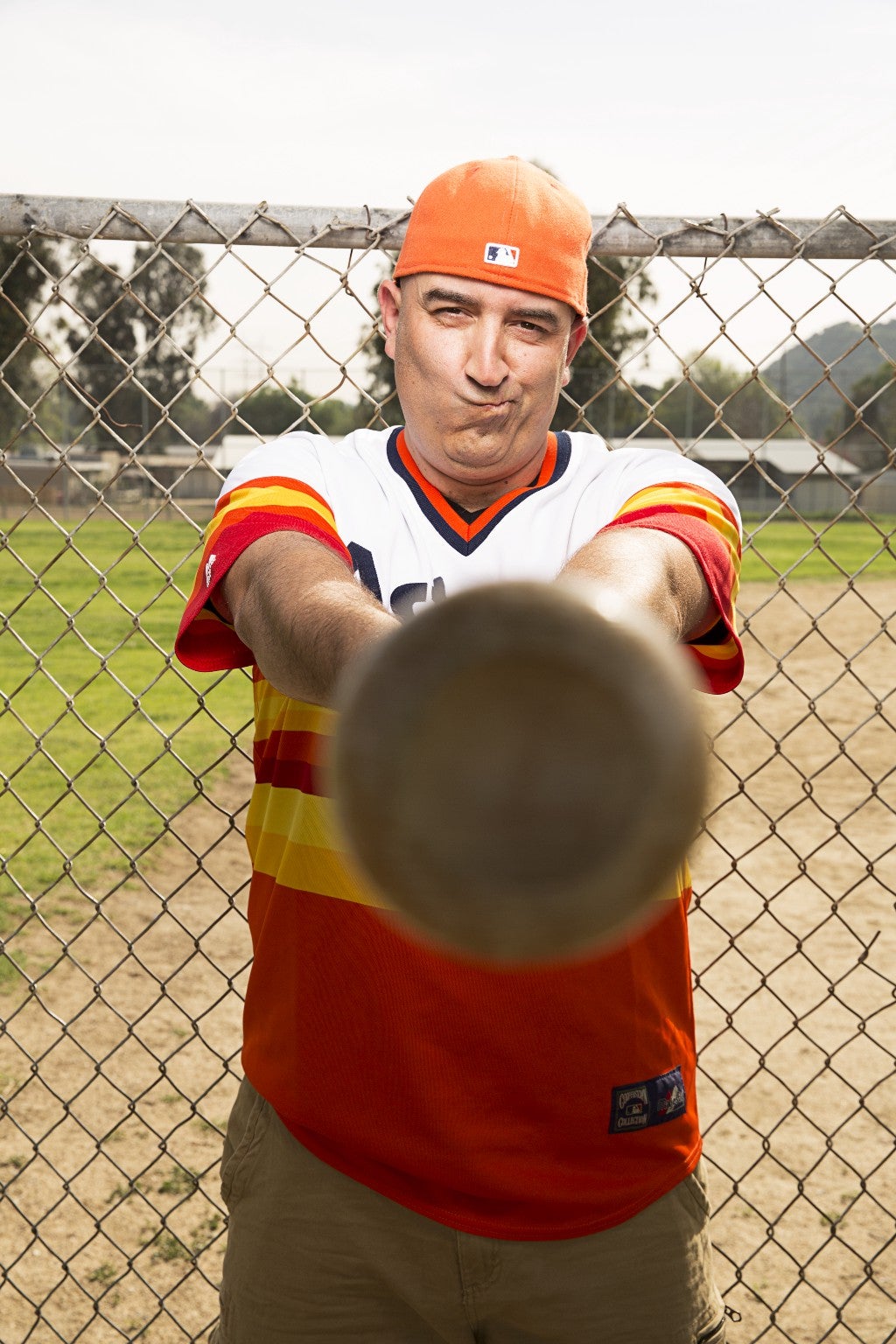
“Alan Trammell!” one of the newcomers beckons, referring to the Detroit Tigers shortstop who retired nearly 20 years ago.
As asked, Ryness does Trammel (stance open, mouth agape, bat wrapped around his own neck so far it points back at the pitcher) without a moment’s hesitation.
It’s here — in the stands, among fellow superfans — where Ryness finds himself most often. Because somehow, unlike seemingly every other internet video sensation, Ryness has struggled with how to monetize the brand he’s made for himself.
https://twitter.com/fightinhydrant/status/599044066232258560
“I’m admittedly not entrepreneurial,” Ryness says on the pitch-black ride back to Los Angeles. “I wanted to keep this thing pure to a degree.”
The particularity of his talent is a blessing and a curse, he explains. While his skill has earned him praise from ballplayers, entertainers, baseball fans and front-office executives, it’s so specific and obscure that TV producers have struggled with how to transform it into something more than an occasional sideshow.
Indeed, when Ryness first showed his Jeter impression to Jeter, the recently retired Yankees great dismissed him as someone with too much time on his hands, according to Ryness.
Ryness estimates he’s earned just $120,000 over seven years as Batting Stance Guy, hardly enough to support a family of four.
His break may be imminent, though. Earlier today, Ryness guest-hosted Padres Social Hour, an Internet TV show produced by the Padres. Ryness suspects the regular host will soon be poached by the local ESPN Radio affiliate, leaving open the host chair for Ryness to more permanently assume.
It’d be the realization of his long held dream to be a sports broadcaster. But first, he needs to pick up an Uber rider.
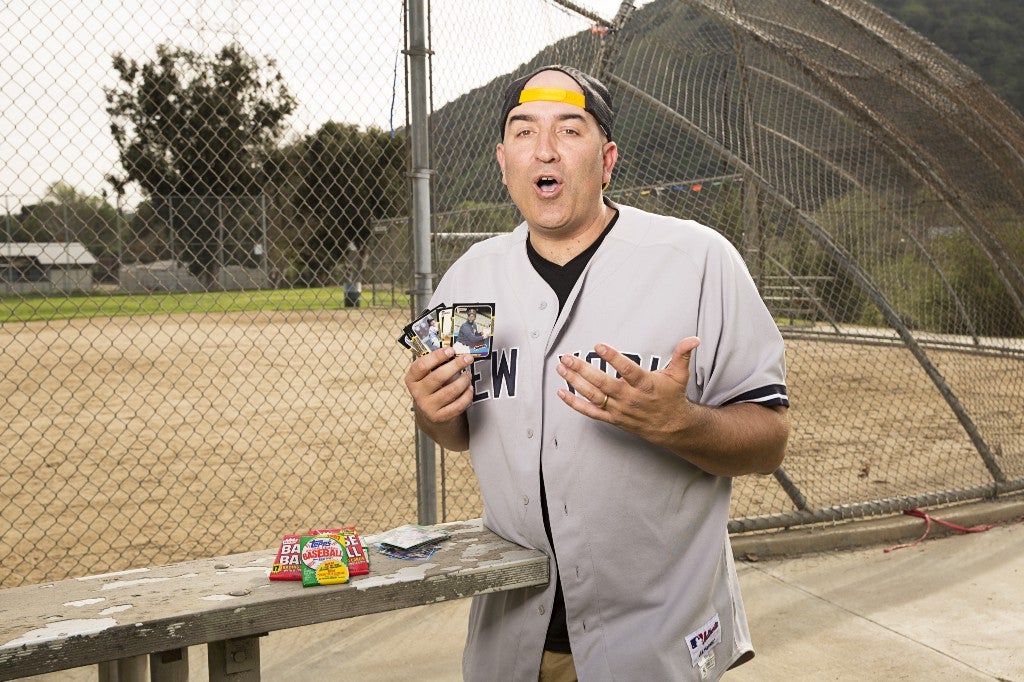
It’s 2 a.m., some 14 hours since his first set out for Petco, when Ryness returns to LA and transforms his charcoal Toyota Prius into an UberX. The bars are getting out, and he could use the surge fare.
John McDermott is a staff writer at MEL, where he recently compiled an oral history about the work life in Chicago’s infamous commodity futures pits.
